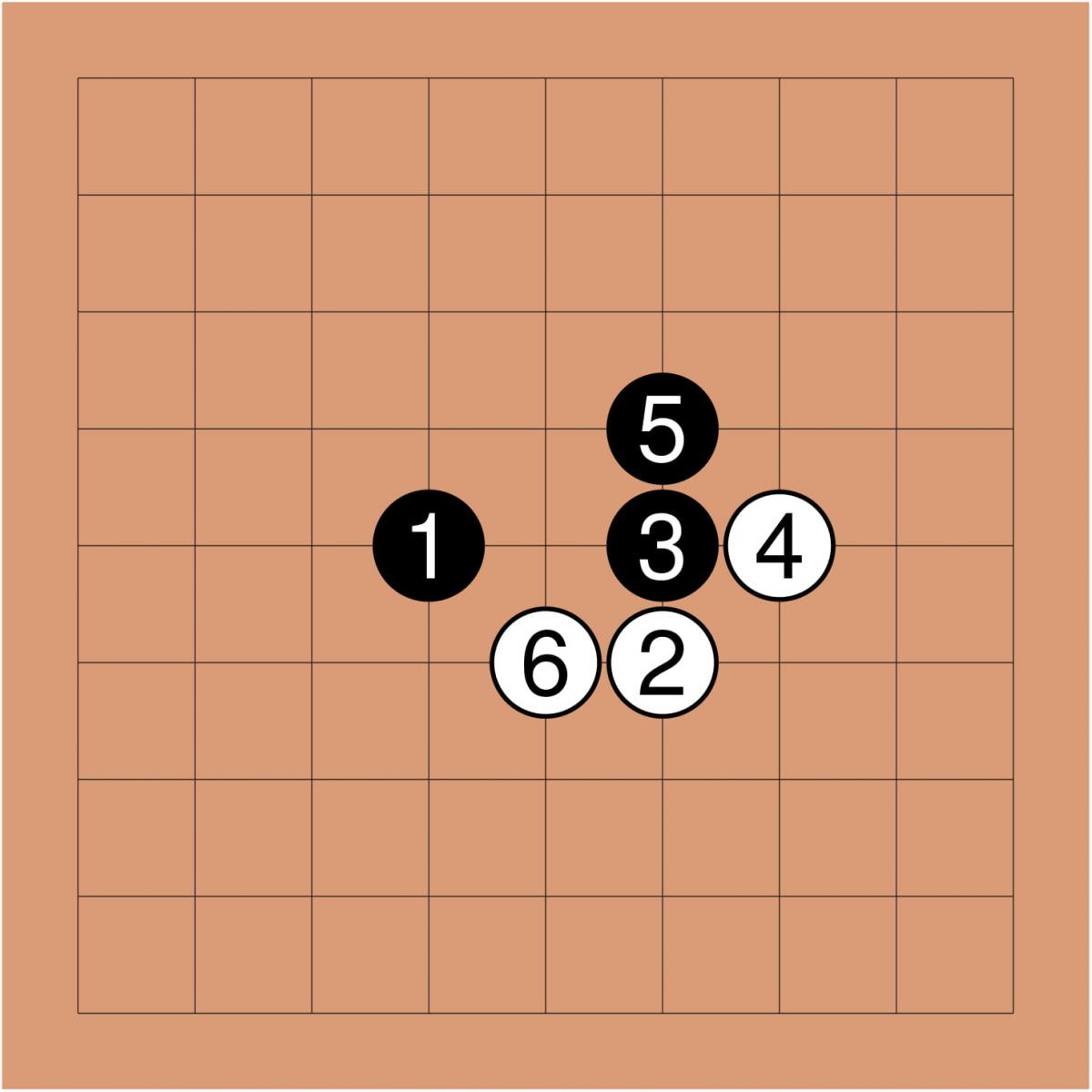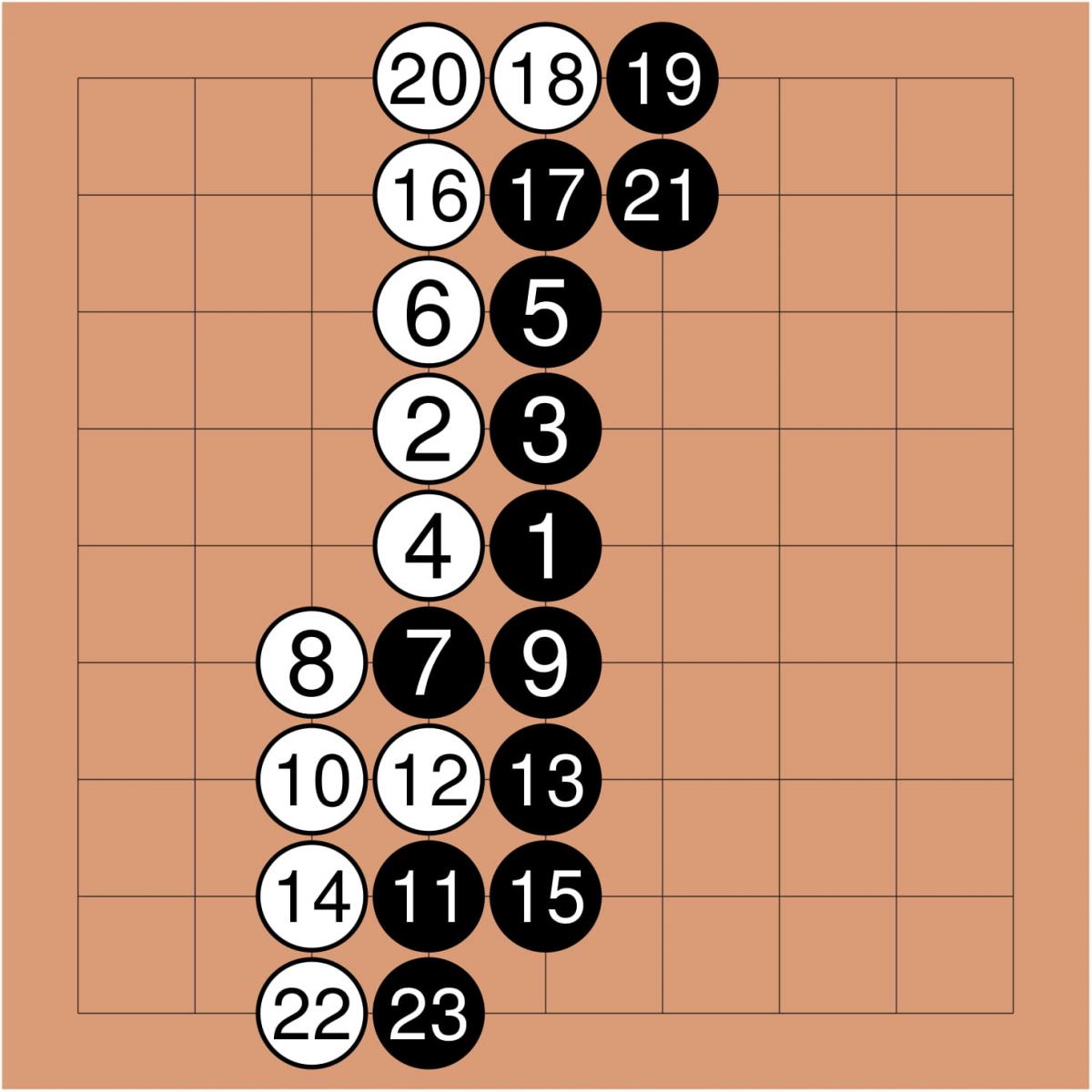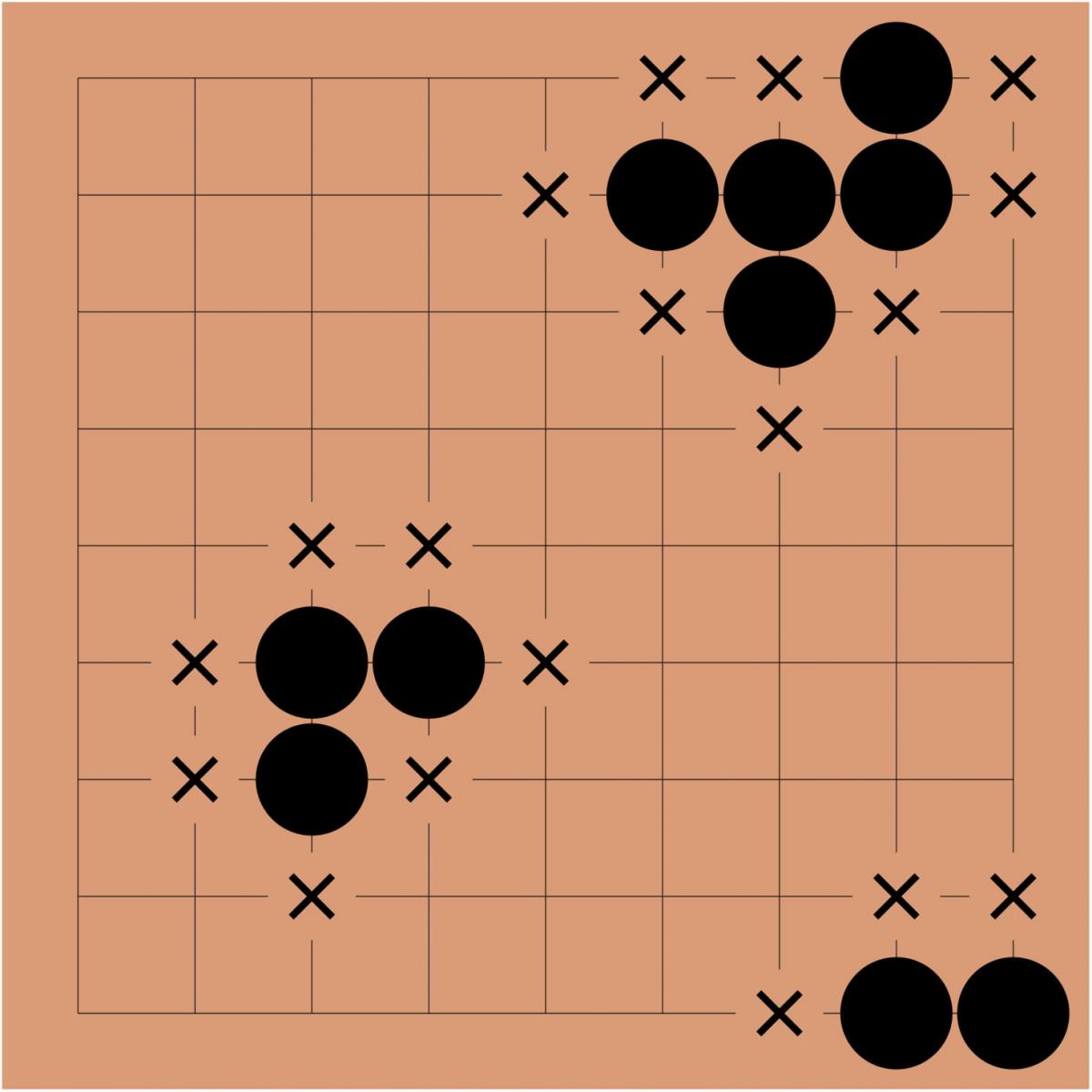A regular Go match is played between two players on a square board. One of the players plays with black pieces (called stones) and the other player plays with white stones. The object of the game is to surround a bigger part of the board than the opponent. Read more and learn how to play Go.
The beginning
In the beginning of the game the board is empty. Then the players put on the board their black and white stones one after another. The player with black stones makes the first move. An example of the first moves of a game is shown on the diagram below.
The game finishes when the players split the board and decide that no more sensible moves are available.
What is needed to play Go?
To play Go you need a board and a set of stones.
The regular Go tournaments are always played on big boards of size 19×19. The number of stones in a set usually equals 360 or 361 (180 white stones and 180 or 181 black stones).
Beginners usually start to play Go on smaller boards of size 9×9. In these sets there are usually only 40 white stones and 40 or 41 black stones.
With a smaller size of the board a game won’t take that much time. However, it doesn’t make the game uninteresting. During big Go events, like European Go Congress, there is always a 9×9 tournament.
Almost all Go boards are made of wood. Because of an important role of Go in the culture of the Far East, Go boards are often made of high quality wood. Usually kaya, a type of yew tree, is being used.
The Go stones are often made of glass or ceramic. However, the highest quality Go sets include black stones made of slate and white stones made of shell.
Go – the surrounding game
In Go, a move consists of putting a stone on any empty intersection of the board. The goal of each player is to surround as big territories with their stones as possible and not to let the opponent do so. That’s the reason why the name of Go in Chinese can be translated as the surrounding game. An example of a Go match is shown on the diagram below.
Black surrounded a territory on the right, and white on the left. The one who surrounded more empty intersections (got more points) is a winner. On the diagram black got 35 points and white got 23 points, so black wins.
However, you could ask a question: what if white doesn’t agree that the area on the right is black’s territory – wouldn’t it be possible for white to play there?
White can play in that area. However, it’s not clear if the stone will survive. To understand it, we need to learn the rule of capturing stones.
How to capture stones in Go?
An important rule of Go says that when a stone gets closely surrounded by the opponent, it becomes a prisoner and it’s removed from the board. It means that to capture your opponent’s stone, you need to put your stones on all adjacent intersections. The same applies to chains of stones, i.e. connected stones of the same color. On the diagram below you can see a few chains of black stones.
The marked intersections are the placements, where white needs to play to capture black stones. These placements are called liberties. You can also notice that if the stones are placed in the corners or at the edges of the board, they will not have as many liberties as if they were laying in the center.
Knowing the capturing rule, we can understand what happens on the 2nd diagram. White can play on the right side of the board. Then black will try to surround and capture white’s stone. If black succeeds, they will defend their territory.
Capturing stones also affects the final score of the game. Every captured stone is counted as one point, just like every empty intersection surrounded by a player. Moreover, if a stone can potentially be captured, a player doesn’t necessarily need to actually capture it. At the end of the game they can just claim that the stone is dead.
Dead stones are taken off of the board and each of them is counted as one point. If the opponent argues that a stone is not dead, the first player needs to prove and show that they can capture the stone.
Komi rule and impossible draws in Go
In Go the player with black stones has an advantage because of playing the first move. To compensate this advantage – a fixed number of points is added to white’s score. These added points are called komi.
Komi is usually set as 6,5 or 7,5 points (the difference is explained in another article: Go rules – Japanese vs Chinese). The difference between Japanese and Chinese rules doesn’t affect the gameplay, it’s basically only a very small difference in counting points. This tutorial and the following materials on the blog are prepared for the Japanese rules.
Komi serves also another goal. Because of the half point a Go match cannot ever end in a draw.
Watch the 2 min video summarizing the rules and showing how to count points in Go
Ko rule in Go
The ko rule is the last of the rules. Thanks to the ko rule, every game comes to an end. The rule says that during a game a situation on a Go board cannot be repeated. Without this rule a match consisting of a situation from the diagram below could last forever.
White’s single stone A has only one liberty left – at B. If now Black plays at B, the white stone will be taken off of the board. Then the black stone B will have only one liberty – at A. In that situation the ko rule will forbid White to capture the black stone because it would repeat a position on the board.
Watch the 1min 41s video summarizing the ko rule
How to start playing Go?
The above description summarizes all the rules of Go game. Now you can start playing Go. Get a Go set and play with a friend or alternatively play Go online.
However, even though the Go rules are very simple, the gameplay is very complex and deep. Thus, if you want to learn something more than only the rules (and win more often), read about eyes in Go and learn the basics of protecting your stones, so that the opponent will never be able to kill them.



